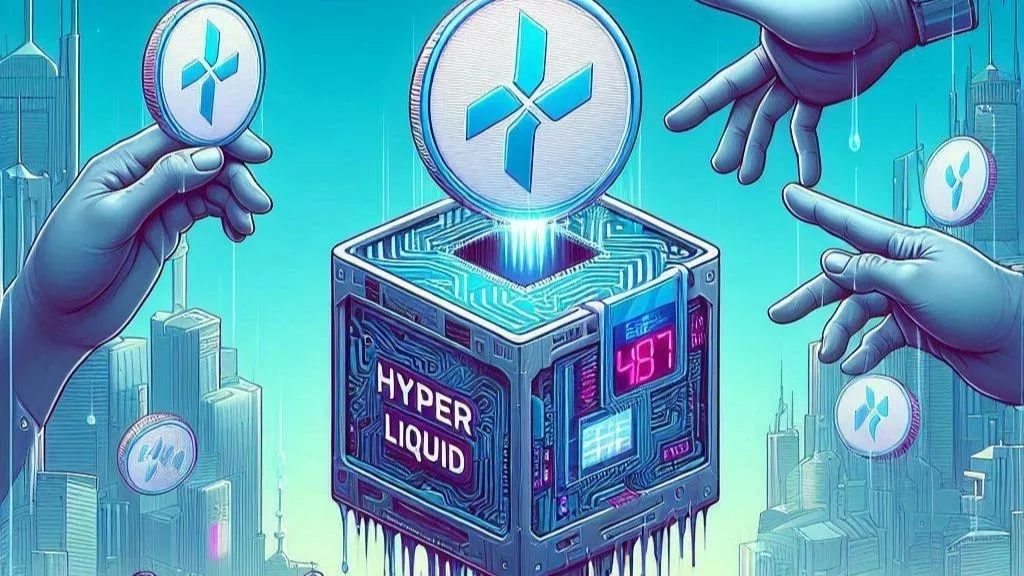
The Hyperliquid NFT ecosystem has shown signs of resilience, despite a significant 18% drop in the value of its native token, HYPE. However, adoption has remained sluggish, raising concerns about the long-term potential of the protocol’s NFT market. With limited liquidity and slow bridging to the Ethereum Virtual Machine (EVM), the question remains whether Hyperliquid NFTs can gain the momentum needed for broader market acceptance or if they will remain a niche asset.
The Hyperliquid token, HYPE, experienced an 18% decline in value this week, which typically would have triggered a drop in related assets, including NFTs. However, NFTs tied to the Hyperliquid protocol, such as Hypers and Mechacats, have shown surprising resilience. Despite the HYPE token’s price fluctuation, these NFT collections have continued to trade steadily. The floor prices of Hypers and Mechacats remain largely unaffected, with Hypers priced at 9.85 and Mechacats at 10.50.
This stability in NFT floor prices is a sign that there is still some demand for these collections. However, this doesn’t necessarily mean that the market is on a strong upward trajectory. The stability of these NFTs could simply indicate that they have found a niche audience, rather than a large-scale market movement. Without deeper engagement, the long-term viability of these collections remains uncertain.
One of the most significant challenges for Hyperliquid’s NFT market is the slow rate at which users are bridging to the EVM ecosystem. Only 1.5% of users have made the transition, which severely limits liquidity. This slow adoption is holding back potential demand and making it difficult for the ecosystem to scale.
For NFTs to flourish in the Hyperliquid space, greater liquidity is essential. The current market is mainly driven by speculative trading rather than actual utility, as evidenced by the limited number of users bridging to EVM. Traders looking to invest in these projects must weigh the risks associated with low liquidity and market adoption. While early participation could offer lucrative opportunities, the slow adoption rate raises doubts about the sustainability of these assets.
Hypers and Mechacats are among the most actively traded NFT collections within Hyperliquid, but they remain relatively small in volume. Hypers has a total volume of 77,146, while Mechacats has 25,720, indicating moderate trading activity. However, both collections face liquidity constraints, which hinder their growth potential. Without a wider user base or more liquidity, these projects may struggle to reach the broader NFT market beyond the current niche investors.
NFT adoption in the broader crypto market has slowed in recent months, with many traders shifting focus to fungible tokens rather than non-fungible assets. This trend, combined with Hyperliquid’s slow bridging rate, means that the demand for NFTs in this ecosystem is largely speculative, limiting their overall growth.
For Hyperliquid’s NFT ecosystem to truly take off, broader adoption is critical. The protocol’s biggest challenge remains bridging users to the EVM ecosystem. Until this issue is addressed, liquidity will remain limited, and price appreciation for collections like Hypers and Mechacats will continue to be constrained.
Incentives such as staking rewards, governance perks, or exclusive integrations within the Hyperliquid ecosystem could help drive participation. Collaborations with well-established NFT marketplaces could also provide greater exposure for these collections, attracting a larger audience. If the broader NFT market sees a resurgence, it could renew interest in Hyperliquid’s assets and provide much-needed momentum.
However, if the current pace of adoption continues, investors may face stagnation or diminishing returns. For now, Hyperliquid NFTs remain a speculative investment, with the potential for growth tied directly to the protocol’s ability to increase user engagement and liquidity.
Get the latest Crypto & Blockchain News in your inbox.